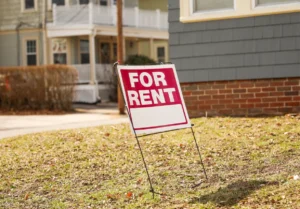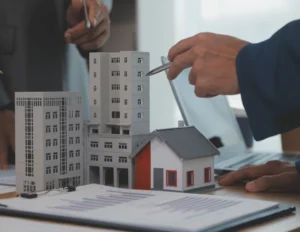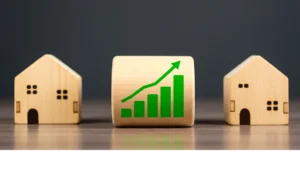Fifield Cos. CEO: ‘Expect Uneven Impact on Multifamily Market’
 As the coronavirus washes over the country, the multifamily business has embraced a “wait-and-see” approach, as it looks ahead. In the meantime, many residents are struggling to pay rent. As more hourly workers file for unemployment, it will become clear how unevenly the pandemic is impacting the market. The luxury sector is not expected to experience significant disruptions, as high-earning renters will be less affected by job cuts. However, rent collections in Class B and C communities are expected to drop, Fifield Cos.’ Founder & CEO Steve Fifield told Multi-Housing News.
As the coronavirus washes over the country, the multifamily business has embraced a “wait-and-see” approach, as it looks ahead. In the meantime, many residents are struggling to pay rent. As more hourly workers file for unemployment, it will become clear how unevenly the pandemic is impacting the market. The luxury sector is not expected to experience significant disruptions, as high-earning renters will be less affected by job cuts. However, rent collections in Class B and C communities are expected to drop, Fifield Cos.’ Founder & CEO Steve Fifield told Multi-Housing News.
Fifield Cos. is handling tenant requests on a case-by-case basis, according to senior vice president Jon Schneider. The company’s short-term priority is to keep apartment buildings thoroughly sanitized and make sure that most amenity areas remain closed during the state of emergency. In the interview below, the two executives discuss the company’s projects and mid-term goals.
What are some of the solutions you’ve implemented at Fifield Cos. properties to better navigate these trying times?
Schneider: First of all, we are keeping our buildings clean in accordance with high standards and best practices. We’re also making sure our residents, staff, delivery personnel and any guests are constantly reminded to respect safe social distancing requirements. We’ve closed gyms, coworking spaces and other more “social” amenities until the pandemic is over.
We are also making sure to communicate actively with renters and provide some positivity during this tough time. We’re offering virtual fitness classes, fun competitions through social media and we even leave small gifts at their doors.
All our projects that are underway are active construction sites where we have been able to continue work by following health, safety and social distancing procedures outlined by the local government. We’re fortunate to have construction partners who are taking precautions very seriously so they can continue working.
General predictions for the multifamily market are about to change under the impact of the coronavirus pandemic. What challenges are you expecting ahead?
Fifield: The pandemic, in particular its impact on jobs, will affect different asset classes and locations unevenly. For example, Class A urban multifamily, where most residents are college graduates who earn salaries in jobs that can be done in a remote-work setting, will experience fewer job losses.
Class B and C apartments with more renters who are hourly workers, who may experience higher job losses, will contend with decreased collections. Geographic areas, too, will be impacted differently depending on increased layoffs at major employers. For example, if auto manufacturers in Detroit increase layoffs, there will be a decrease in rent collections.
Schneider: We’re handling tenant requests on a case-by-case basis.
Some investors have started to postpone closing deals, worried about overpaying. Others have been taking advantage of historically low interest rates and are buying or refinancing. What would be the wisest approach right now?
Schneider: Many investors are slowing down or stepping back due to more uncertainty in the capital markets. Debt funds have pulled out of the market, while some investors are waiting to see if there’s an increase in vacancies due to job losses. Otherwise, we’re in a two-to-three month wait-and-see period to ascertain how severely the COVID-19 pandemic impacts the economy.
Fifield: After every recession, real estate values generally go up, usually above previous highs. If a seller is discounting a property to get liquidity and the buyer is buying at a discount to recent valuations, good values can be had. Lenders were increasing spreads for loans 50 basis points or more, so a February quote of 3.25 percent may be 3.75 percent or more today. Some still believe that 3.75 percent is still competitive compared to historical levels, so why not refinance?
Fifield Cos. is very active in Chicago. As things evolve, how affected do you think the city’s multifamily market will be?
Fifield: The impact will be uneven. Luxury high-rise apartments occupied mostly by workers in industries that can continue to operate within the parameters of social distancing and shelter-in-place guidelines won’t experience too much disruption in rents. Older B and C buildings, located in outlying neighborhoods and suburbs, are expected to see lower collections or occupancy due to a high number of hourly-wage workers who may experience layoffs or move in with family.
What impact do you think the new circumstances will have on rental rates in Chicago?
Schneider: I believe there won’t be wholesale discounts in rental rates but there will be a flattening in rental increases. With the current uncertainty and health concerns, many renters are likely to renew leases in their existing buildings instead of moving.
Tell us a bit about your development plans for this year. What projects are you working on and what challenges are you expecting?
Fifield: Development is subject to the availability of capital. Many banks and pension funds and other institutions are stepping back for several months trying to assess the fallout from the pandemic. During that time, many deals will also be delayed.
In terms of projects that are underway, we are near completion on Logan Apartments in the Logan Square neighborhood of Chicago and are expected to open Westerly in the River West neighborhood in Chicago in the fall. We are preleasing for the first phase of Catherine in Los Angeles, which will also be completed this year.
Property owners have been competing to add the best and most surprising amenities to their assets. How are you responding to this trend?
Schneider: Expanded coworking spaces, resident artists, sound studios, boxing rings and outdoor theaters are some of the more unique amenities we’re adding to our properties these days. Time will tell what tenants like best. Regardless, we’re expanding the size of amenity areas more than we did even 10 years ago. This allows us the flexibility to reprogram our amenity areas as the tastes and needs of our tenants change over time.
This is especially important given that we are experiencing a generational transition with more Gen Z renters coming into the market, as well as to address any changes that result from significant events like what we are experiencing now.
Your company is paying attention to the impact assets have on the community and the environment. Tell us about a sustainable project and how it has impacted the community around it.
Fifield: LEED and Green Globe checklists for high “green-building” ratings have really informed us of the importance of energy-efficient mechanical systems, wastewater treatment, recyclable materials, low-gain glass, Nest-style thermometers and other green features. We’ve incorporated these things into all of our developments to varying degrees.
Next, our building in Chicago’s River North neighborhood is a great example of sustainable and community-minded development. This urban infill project filled a “donut hole” of underutilized space in this highly walkable neighborhood, with great access to multiple forms of public transportation. We brought 310 units to the neighborhood in a Green Globes building that features a green roof, green terraces, a living wall in the amenities area and energy-efficient fixtures and appliances. We also installed electric charging stations in the garage and offered bike parking.
In regards to the community, we’re doing community art, sculptures or graffiti walls as it helps make our projects more “of” the neighborhood not just “in” the neighborhood. For example, at Logan Apartments we worked with local artists to provide materials and art for our common-space interiors. We even worked with our interior designer to create a custom table using a piece of the building that used to stand at that location.
Tell us about your company’s mid- and long-term goals.
Fifield: Demand for urban infill and suburban communities with robust “downtowns” will continue to be our focus. The demand for more multifamily housing is still more than the supply in most major urban areas.
Source: multihousingnews.com













 Accessibility
Accessibility